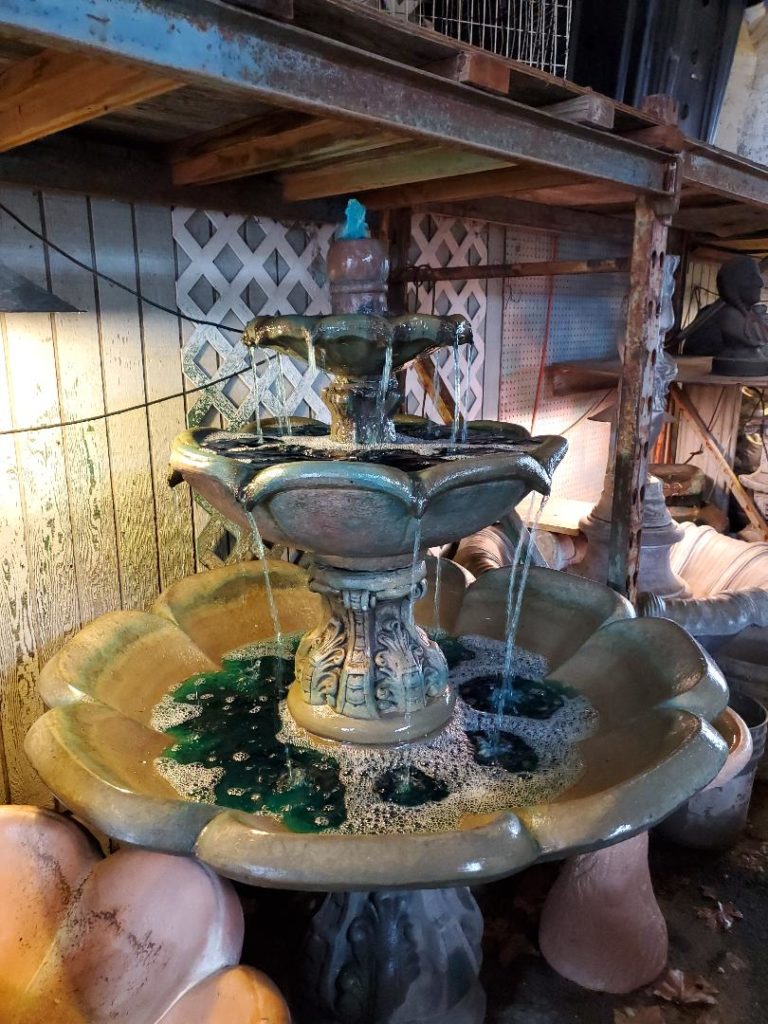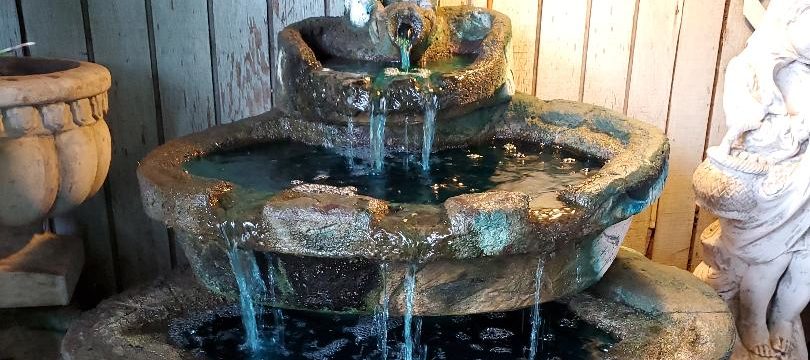From your garden to the Bellagio in Vegas, fountains have been one of the pieces of ancient art and architecture to transcend time and are still the objects of wonder and enjoyment for many. However, not a lot of people know of its humble origins. The existence of fountains have not always been for aesthetic purposes only. They were initially created as a vessel for drinking and carrying religious or ceremonial water. Fountains were referenced in diagrams of ancient Egyptian tombs and are known to have existed since the early Bronze Age in Greece and the Indus valley. Until the late 19th century, most fountains relied on gravity to control the water flow and are situated near springs, streams or aqueducts. The word “fountain” itself, derived from the Latin Fons, means a natural spring or source. Fountains are largely believed to have been invented by an advanced ancient civilization called the Minoans and later made its way to Rome in as early as 6 BC, where they began building bronze and stone fountains after animals and local and mythological heroes. Romans are also largely credited for the existence of free standing fountains powered by sophisticated pipes under the street and very early on, Roman fountains were able to use water pressure to jet water from a distant and higher source up into the air, much like modern day fountains. Eventually, at the end of the 19th century, indoor plumbing became the norm and water transportation using gravity was easily replaced by modern pumping systems.

Persians had great influence over the idea of having a fountain within gardens or pools surrounded by architecture meant to resemble heaven. In the Middle Ages, fountains became a symbol of purity, life, wisdom and innocence. Christian allegory used fountains as a symbol of rebirth, specifically the idea of the Fountain of Life and the Garden of Eden. Most medieval fountains found in monasteries, gardens and palace grounds featured Bible stories and societal virtues. In the 17th to 18th century, the Catholic Church used fountains to win more support against the rising Protestant Reformation. They believed that lavish, emotional and animated art will help them counter Protestantism. The fountains of Rome became a principal example of Baroque art, featuring myriads of sculptures lifted from Christian text. These sculptures became the focus and the water was used to further its movement. Fountains are also present in other religions. In Islam, water is considered holy and a Gift from God and fountains refer to a place inside or separate from the Mosque where worshippers can wash before Prayer. Islamic gardens are traditionally enclosed by walls and outlined in the form of a cross with four channels representing the rivers of paradise and divided the world in four parts. This design spread throughout the Islamic world, from moorish Spain to the Mughal Empire in the Indian subcontinent. You may have also heard of Juan Ponce de Leon and his search for the Fountain of Youth, a derivative from its more religious counterparts.
More Baroque interpretations can be found in other regions. Famous examples include the fountains found in the Gardens of Versailles commissioned by King Louis XIV of France. He saw fountains as a way to flaunt his power over nature and over his people. The garden featured an early form of a dancing fountain with water shooting out into the sky and fanning out. Combined with music and fireworks, the fountains were not only a grand spectacle but a clear statement from the King to his people. One of the fountains, The Fontaine Latone, depicts the peasants of Lycia turning into frogs after tormenting Latona and her children, Diana and Apollo. This was a reminder of how Anne of Austria, the King’s mother, was tormented by peasants in the French uprising called the Fronde. When the fountain turned on, the water would pour onto the peasants in their frenzied state after transforming into creatures.
Though most of these historical fountains are still standing today, the purpose and architecture of fountains have changed a lot in the 21st century. Most fountains, if not all, are no longer used as a source of drinking water and are built purely as decoration and even as attractions. Electric and mechanical pumps are widely used now instead of simply relying on gravity. Some fountains use and merge various forms of modern technology, incorporating lights, music and bitmap technologies. Fountains have become a type of shared experience, from simply being a structure that gave access to a necessity to being admired as a piece of architecture and now, an interactive element to any garden, palace or cathedral.

The Buonamici Gardens have a variety of fountains that will meet your needs. Aldo, the owner of Buonamici Gardens has been building and selling fountains for many years (his great, great grandparents were in this business and handed it to him). He has a shop (stall number is C5) at Maclin Open Market (7407 East Riverside Dr. Ontario, CA 91761) that offers not just fountains but also includes statues and masks. Buonamici Gardens’ products are available in our SwapMeetShops app. It’s available on App Store and Google Play. If you download the app now, you’ll be able to see his fountains and other products. We have other vendors in the app too so download it now to see what the market offers. You may call Aldo at (951) 399-4442 for your inquiries.


One comment